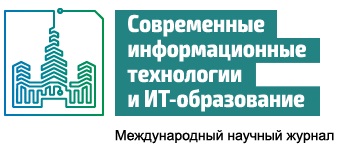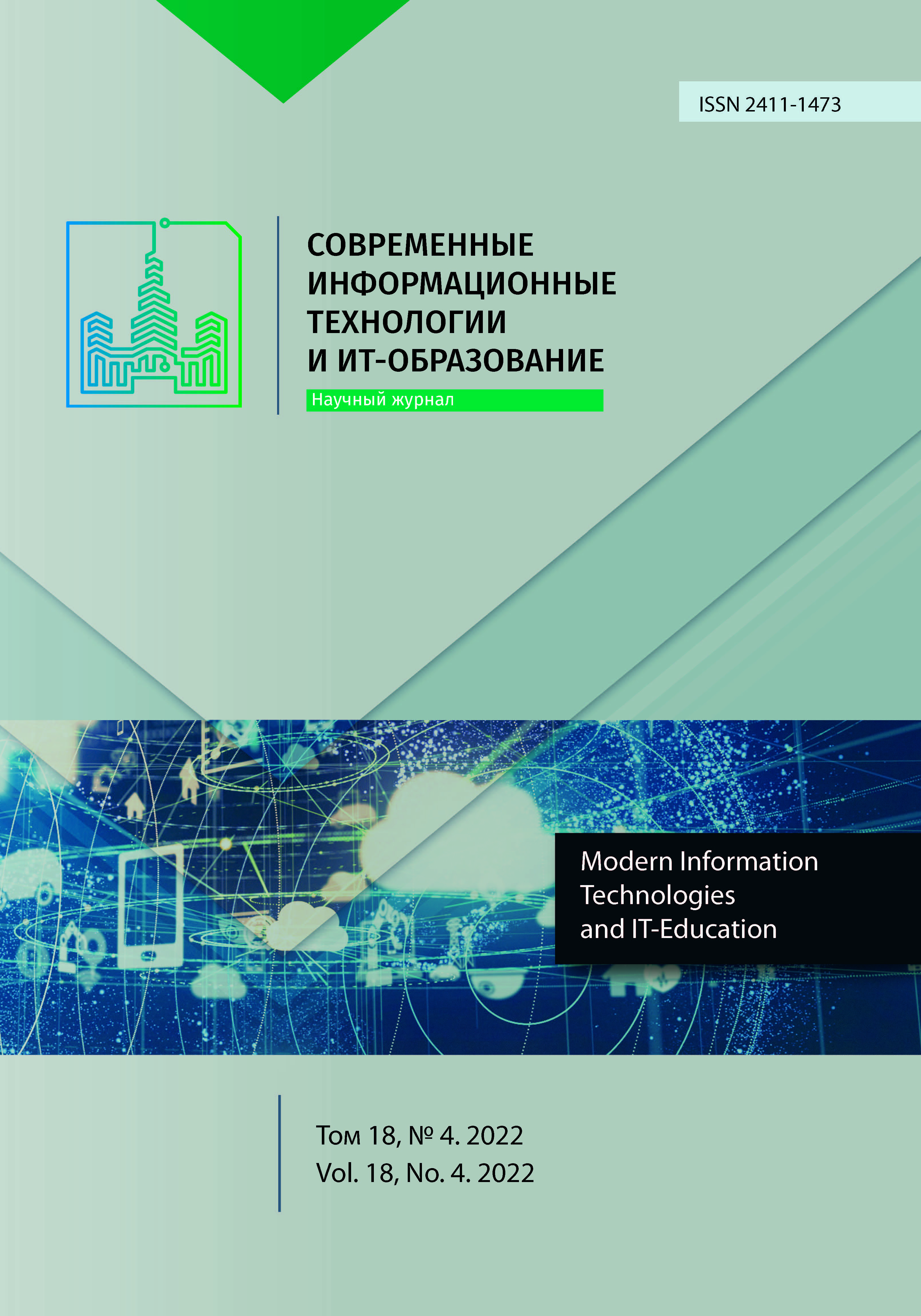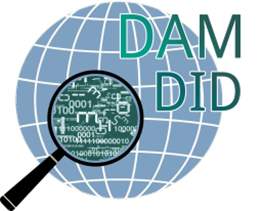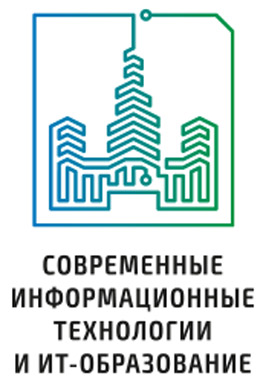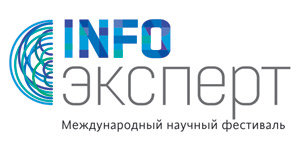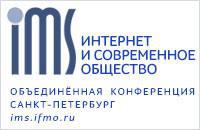Редактирование графов как метаданных электронной библиотеки
Аннотация
Доклад направлен на совершенствование редакторов графов общего назначения для нужд объектного поиска и администрирования сети метаданных электронной библиотеки. Одной из тенденций развития электронных библиотек является обогащение и усложнение метаданных за счет контента хранимых в библиотеке электронных документов. Метаданные помогают лучше использовать библиотечные фонды, так как отражают соответствующие области знания в структурном виде, описывая контекст, содержание и структуру электронного документа на протяжении всего его жизненного цикла. Идея анализа структуры научного дискурса с целью отображения его в метаданные восходит к последним годам ХХ века, когда появилась теория структурной риторики, продолжившая своё развитие в первом десятилетии нового века. К тем же годам восходит идея моделирования научного и технического прогресса на основе сети проблем. В такой системе пользователь видит на экране компьютера комплексную сеть, состоящую из сети научно-технических проблем, сети инновационных циклов технических продуктов, связанных с показываемыми проблемами, и сети документов библиотеки. Сети проблем визуализируются представителем специального класса прикладных программных систем – редактором графов, считывающим с файла представление сети в текстовом или двоичном формате. Редактор графов строит элементы сетей в своей памяти в форме объектов и показывает их в своих окнах в двух формах: в виде размеченного раскрашенного графа и в виде таблицы, отображающей атрибуты объектов. Раскрыта актуальность проблемы выбора базового программного средства и его последующей модификации для работы с сетями метаданных электронных библиотек. Представлены основные положения модификации интерфейса редактора, позволяющие адаптировать программную систему редактора графов для работы с сетью метаданных электронной библиотеки. Предложенная концепция интерфейса редактора позволяет использовать выдвинутый экземпляр специального представителя класса подобных программных систем для нужд электронной библиотеки.
Литература
2. Ferro N., Silvello G. NESTOR: A formal model for digital archives. Information Processing & Management. 2013;49(6):1206-1240. doi: https://doi.org/10.1016/j.ipm.2013.05.001
3. Färber M. The Microsoft Academic Knowledge Graph: A Linked Data Source with 8 Billion Triples of Scholarly Data. In: Ghidini C., Hartig O., et al. (eds.) The Semantic Web – ISWC 2019. ISWC 2019. Lecture Notes in Computer Science. Vol. 11779. Cham: Springer; 2019. p. 113-129. doi: https://doi.org/10.1007/978-3-030-30796-7_8
4. Gagarin A.P., Filimonov I.A. Problem Network as Access Gate into a Document Repository. Modern Information Technologies and IT-Education. 2020;16(3):582-597. (In Russ., abstract in Eng.) doi: https://doi.org/10.25559/SITITO.16.202003.582-597
5. Filimonov I. Experience of developing personal bibliographic retrieval system, oriented on specific area of scientific or engineering knowledge. Trudy MAI. 2020;(114):15. (In Russ., abstract in Eng.) doi: https://doi.org/10.34759/trd-2020-114-16
6. Devezas J. Graph-based entity-oriented search. ACM SIGIR Forum. 2021;55(1):15. doi: https://doi.org/10.1145/3476415.3476430
7. Wu J., Williams K.M., Chen H.-H., Khabsa M., Caragea C., Tuarob S., Ororbia A.G., Jordan D., Mitra P., Giles C.L. CiteSeerX: AI in a Digital Library Search Engine. AI Magazine. 2015;36(3):35-48. doi: https://doi.org/10.1609/aimag.v36i3.2601
8. Balog K. Entity-Oriented Search. The Information Retrieval Series. Vol. 39. Cham: Springer; 2018. 351 p. doi: https://doi.org/10.1007/978-3-319-93935-3
9. Siew C.S.Q., Wulff D.U., Beckage N.M., Kenett Y.N. Cognitive Network Science: A Review of Research on Cognition through the Lens of Network Representations, Processes, and Dynamics. Complexity. 2019;2019:2108423. doi: https://doi.org/10.1155/2019/2108423
10. Demchak B., Otasek D., Pico A.R., Bader G.D., Ono K., Settle B., Sage E., Morris J.H., Longabaugh W., Lopes C., Kucera M.,Treister A., Schwikowski B., Molenaar P., Ideker T. The Cytoscape Automation app article collection. F1000 Research. 2018;7:800. doi: https://doi.org/10.12688/f1000research.15355.1
11. Gagarin A.P., Filimonov I.A. Enriched Problem Network as a Core of the Metadata in a Digital Library. Modern Information Technologies and IT-Education. 2021;17(4):860-870. (In Russ., abstract in Eng.) doi: https://doi.org/10.25559/SITITO.17.202104.860-870
12. Constantin A., Peroni S., Pettifer S., Shotton D., Vitali F. The Document Components Ontology (Do-CO). Semantic Web. 2016;7(2):167-181. doi: https://doi.org/10.3233/SW-150177
13. Brandes U., Eiglsperger M., Lerner J., Pich C. Graph Markup Language (GraphML). In: Tamassia R. (ed.) Handbook of Graph Drawing and Visualization. 1st. ed. New York: Chapman and Hall/CRC; 2013. p. 517-541. doi: https://doi.org/10.1201/b15385-19
14. Bokhare A., Metkewar P.S. Visualization and Interpretation of Gephi and Tableau: A Comparative Study. In: Sengodan T., Murugappan M., Misra S. (eds.) Advances in Electrical and Computer Technologies. ICAECT 2020. Lecture Notes in Electrical Engineering. Vol. 711. Singapore: Springer; 2021. p. 11-23. doi: https://doi.org/10.1007/978-981-15-9019-1_2
15. Otasek D., Morris J.H., Bouças J., Pico A.R., Demchak B. Cytoscape Automation: empowering workflow-based network analysis. Genome Biology. 2019;20(1):185. doi: https://doi.org/10.1186/s13059-019-1758-4
16. Smoot M.E., Ono K., Ruscheinski J., Wang P.-L., Ideker T. Cytoscape 2.8: new features for data integration and network visualization. Bioinformatics. 2011;27(3):431-432. doi: https://doi.org/10.1093/bioinformatics/btq675
17. Mouden Z.A.E., Jakimi A., Hajar M. Algorithm of Conversion Between Relational Data and Graph Schema. In: Rocha Á., Serrhini M. (eds.) Information Systems and Technologies to Support Learning. EMENA-ISTL 2018. Smart Innovation, Systems and Technologies. Vol. 111. Cham: Springer; 2019. p. 594-602. doi: https://doi.org/10.1007/978-3-030-03577-8_65
18. Zhu G., Iglesias C.A. Sematch: Semantic Entity Search from Knowledge Graph. CEUR Workshop Proceedings. 2016;1556:2. Available at: https://ceur-ws.org/Vol-1556/paper2.pdf (accessed 10.08.2022).
19. Pavanatto L. Designing Augmented Reality Virtual Displays for Productivity Work. In: 2021 IEEE International Symposium on Mixed and Augmented Reality Adjunct (ISMAR-Adjunct). Bari, Italy: IEEE Computer Society; 2021. p. 459-460. doi: https://doi.org/10.1109/ISMAR-Adjunct54149.2021.00107
20. Jokinen J.P.P., Oulasvirta A., Howes A. Cognitive Modelling: From GOMS to Deep Reinforcement Learning. In: Extended Abstracts of the 2022 CHI Conference on Human Factors in Computing Systems (CHI EA '22). New York, NY, USA: Association for Computing Machinery; 2022. Article number: 121. p. 1-3. doi: https://doi.org/10.1145/3491101.3503771
21. Khaet F., Alfimtsev A. The extended model of goals, operators, methods and selection rules (GOMS) for gesture interfaces. In: Proceedings of the 13th Central & Eastern European Software Engineering Conference in Russia (CEE-SECR '17). New York, NY, USA: Association for Computing Machinery; 2017. Article number: 8. doi: https://doi.org/10.1145/3166094.3166102
22. Beckert B., Beuster G. A Method for Formalizing, Analyzing, and Verifying Secure User Interfaces. In: Liu Z., He J. (eds.) Formal Methods and Software Engineering. ICFEM 2006. Lecture Notes in Computer Science. Vol. 4260. Berlin, Heidelberg: Springer; 2006. p. 55-73. doi: https://doi.org/10.1007/11901433_4
23. Kalpanadevi D. Building an Optimal Model of Cognitive Using KLM and Complexity Theory in Human Computer Interface. In: 2021 5th International Conference on Electronics, Communication and Aerospace Technology (ICECA). Coimbatore, India: IEEE Computer Society; 2021. p. 896-903. doi: https://doi.org/10.1109/ICECA52323.2021.9675914
24. Mishra W., Chowdhury A., Dhar D. Optimizing Operation Research Strategy for Design Intervention: A Framework for GOMS Selection Rule. In: Chakrabarti A., Chakrabarti D. (eds.) Research into Design for Communities. Vol. 1. ICoRD 2017. Smart Innovation, Systems and Technologies. Vol. 65. Singapore: Springer; 2017. p. 61-70. doi: https://doi.org/10.1007/978-981-10-3518-0_6
25. Filimonov I.A. Automation of a Network of Problems Using Programming Tools. Herald of Computer and Information Technologies. 2022;19(11):52-65. (In Russ., abstract in Eng.) doi: https://doi.org/10.14489/vkit.2022.11.pp.052-065

Это произведение доступно по лицензии Creative Commons «Attribution» («Атрибуция») 4.0 Всемирная.
Редакционная политика журнала основывается на традиционных этических принципах российской научной периодики и строится с учетом этических норм работы редакторов и издателей, закрепленных в Кодексе поведения и руководящих принципах наилучшей практики для редактора журнала (Code of Conduct and Best Practice Guidelines for Journal Editors) и Кодексе поведения для издателя журнала (Code of Conduct for Journal Publishers), разработанных Комитетом по публикационной этике - Committee on Publication Ethics (COPE). В процессе издательской деятельности редколлегия журнала руководствуется международными правилами охраны авторского права, нормами действующего законодательства РФ, международными издательскими стандартами и обязательной ссылке на первоисточник.
Журнал позволяет авторам сохранять авторское право без ограничений. Журнал позволяет авторам сохранить права на публикацию без ограничений.
Издательская политика в области авторского права и архивирования определяются «зеленым цветом» в базе данных SHERPA/RoMEO.
Все статьи распространяются на условиях лицензии Creative Commons «Attribution» («Атрибуция») 4.0 Всемирная, которая позволяет другим использовать, распространять, дополнять эту работу с обязательной ссылкой на оригинальную работу и публикацию в этом журналe.
